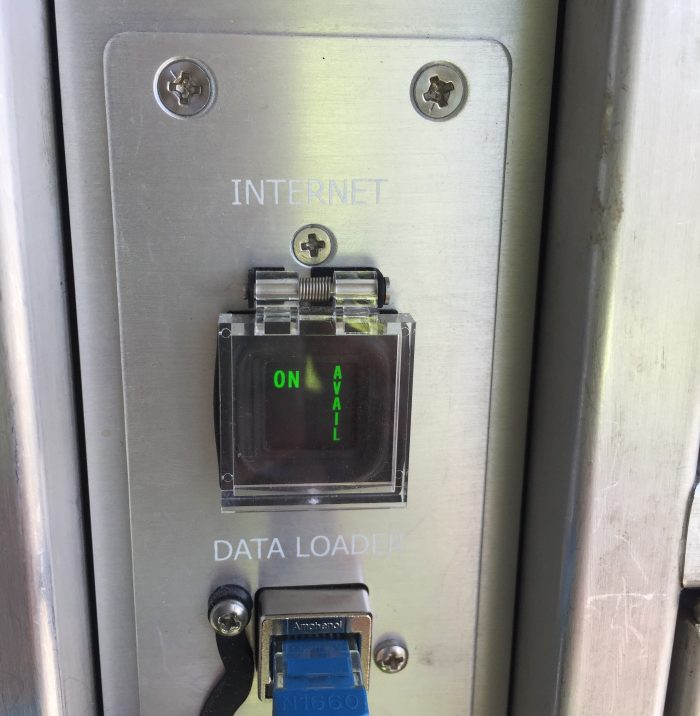
The master switch. Note to crew – please don’t accidentally bump this in the final minutes of the rugby, OK?
There’s been a lot of work happening behind the scenes at Qantas to bring fast, free Wi-Fi to Australian skies.First it was the hardware. It took two weeks to fit one of our Boeing 737s (VH-XZB) with the satellite antenna and electronics at our hangar in Brisbane. This is our aircraft for the first few months of Wi-Fi testing before we roll it out across the domestic fleet.
Next was a series of ground tests on the hardware, including the modem plus four Wi-Fi hot spots spread throughout the cabin.
Then it was some discreet inflight testing. This was done quietly on regular commercial flights, with the Wi-Fi network only visible to a few Qantas technicians on board. They were checking connectivity, speed and performance at different altitudes and on various routes on our network.
A few days ago, we reached a major milestone. A test flight where everyone on the flight was invited to get online.

Some homework. We asked each of the 140 Qantas employees onboard to run through a number of different tasks on their devices and tell us about the performance.
The flight was a special charter and the passengers were all Qantas staff. And their job on this three hour flight along the east coast between Sydney and Brisbane was simple – give the system a real work out.
To test the limits of the system, we gave everyone different tasks. Download an app. Try different streaming services. Do a speed test. Send some emails. Send a text. Test our content filters (maybe explain to the person next to you first…). Do another speed test.
So, how did it go?
It’s fair to say everyone got into the spirit of the experiment. We had 140 people on board and over 200 devices connected to the system.
This workout was a lot tougher than the system will experience normally. We expect an average of around 50 per cent of the aircraft connected via a single device at any one time. We had 100 per cent of passengers connected with an average of 1.6 devices each.
But for a system that is still being tested and refined, it performed extremely well. Typical download speeds were between 7 and 12 megabits per second to each connected device. (You need about 1.5 Mbps to comfortably stream movies onto most handheld devices.)

Which one of you was checking the content filters? Ah, I see. Some of our project technicians getting feedback from testers during the flight.
Most of the testers experienced a seamless streaming experience. But everyone downloading apps at one time did test the limits. (Again, not something that would happen normally.)
Crew were involved as well. In the cockpit, our pilots accessed real time weather on their iPads.
This gave them more detail than they can get from short-range radars on the aircraft and will help them make more informed decisions about the best flight path. On the day of the test, they were able to better avoid some storms that were forming. (The smooth landing was all the pilots’ work, though. They were very clear about that.)
Cabin crew tested a Qantas app designed to help manage people’s connecting flights if they are involved in a delay – something that will make journeys a lot easier.
We gathered a huge amount of user data from this test flight, and we’re now working to make final adjustments ahead of inviting customers to test, then use the system.
We expect that will happen in the next few weeks. We’ll be using these more typical user experiences to keep refining the system for several months as part of our broader trial, before planning to roll out Wi-Fi across 80 of our domestic aircraft from mid-2017 onwards.
We can’t wait.
Read more on wifi here and there’s plenty of more Roo Tales here.